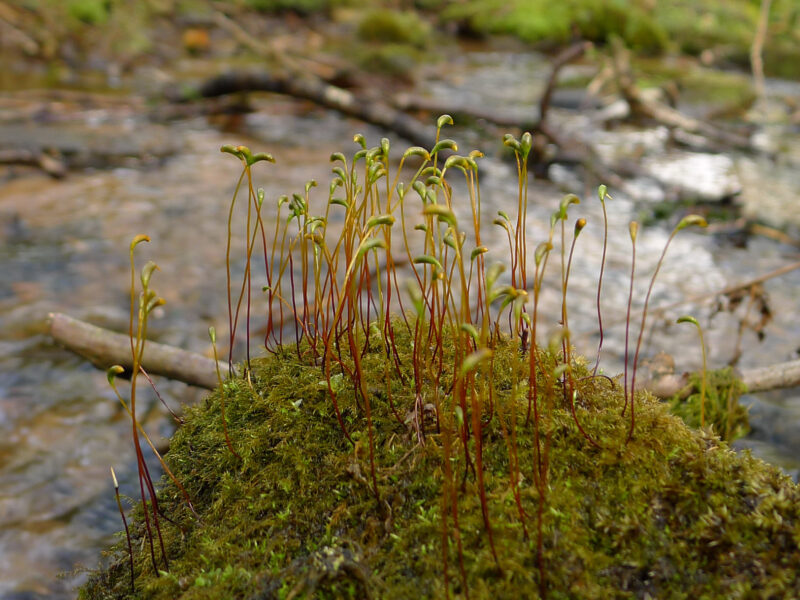Identification notes
This species forms untidy straggling patches on usually firm substrates such as partially submerged logs and exposed tree roots in wet shady places such as alder and willow carr, and swampy areas beside rivers. It has larger than Amblystegium serpens and has more widely spaced erecto-patent leaves so that the stem is sometimes visible in between. The stem leaves are sometimes wider than the branch leaves but can be the same. The important character is that the nerve extends well into the apex. Microscopy is advisable.
It is a variable species, and some forms approach other members of the genus. In continental Europe the members of this genus as treated merely as varieties, because of the variability of the species and conclusions from molecular work and cultivation experiments. In Britain and Ireland we have maintained the traditional species concept since the plants seem relatively distinct with a long nerve that is not as stout as in Hygroamblystegium tenax, which tends to be at least partially submerged (usually in running water) and with a much more wiry character. Hygroamblystegium humile is also very similar, but tends to form looser patches or wefts and has even more widely spaced leaves. It could be also mistaken for Leptodictyum riparium which grows in similar habitats but has larger and longer leaves that lack the elegant shape of Hygroamblystegium varium.
Capsules can sometimes be found.
Read the Field Guide account












